
towns near Al Verde Ristorante and Hotel

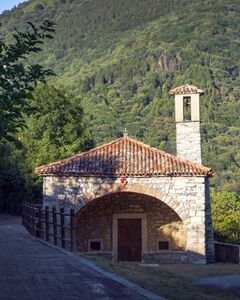
Originally a medieval church (XI century) but many additions and changes have taken place over the centuries. For several years it served as the parish church of Sormano, Caglio and Rezzago. The building, located at a higher level than the street,...
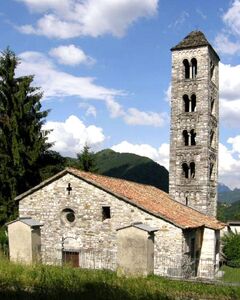
Romanesque in origin, but built on the foundations of a medieval church as demonstrated by archaeological excavations. Another testimony to its antiquity is the dedication to Saints Cosmas and Damian, doctors who were martyred in the fourth century...

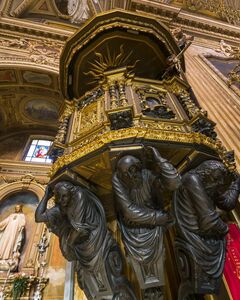
The village contains this interesting church that dates back to the 14th century. It has a fine Romanesque bell tower and a decorated Renaissance portal. An ancient chest behind the altar preserves a precious reliquary, a nail of the Holy Cross....

Built in the space of ten years from 1766-1776. Characterized by a bright interior with elegant harmonious architecture. The walls are like arabesque allegories and symbols of the Passion (spears, lanterns, nails ...). The four corners of the dome,...

Outside of Lasnigo is the Romanesque church of Sant’Alessandro which lies on a slope boulevard flanked by an eighteenth-century chapels of the Cross. In ancient times the original church was built on a lower plateau. Then the bell tower was moved to...
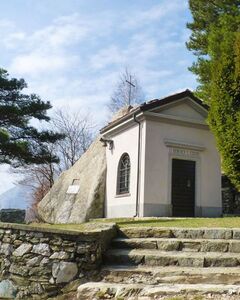
The Stone of Preguda, a rock composed of granite ghiandone, is incorporated in the Church of Sant’ Isidoro. The Stone of Preguda, on the slopes of Moregallo, is a rock composed of granite ghiandone, from the Val Masino and is the most famous...
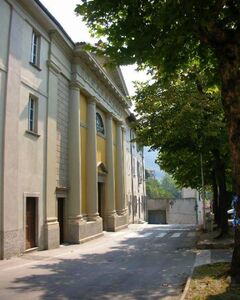
This parish church can be reached through an uphill street passing by the Baroque chapel of the Crocetta. The 19th century front is very elegant and shows a typical Greek design by the architect Bovara. Inside it hosts an altar dating back to the...
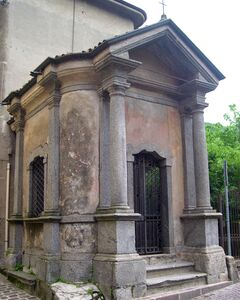
The Chapel of the dead to Crocetta is the oldest and most impressive votive chapel in Malgrate. With baroque architecture, it dates back to the sixteenth century and houses bones, probably of the dead from the plague. Not documented, the chapel is...
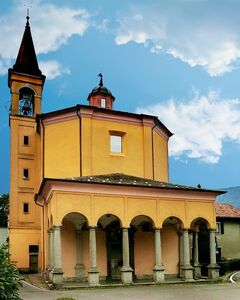
Octagonal building with drum and porch hexastyle made following the discovery (1624) of the image of the Virgin now altar. Factory completed in 1630, but with following reconstruction (porch redone in 1742 and the bell tower in 1912). Outside of the...
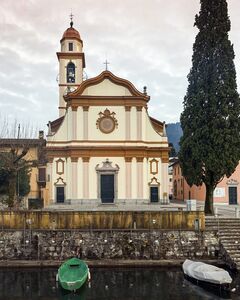
Executed in Baroque style (17th c.), with single nave and wooden altar piece dating back to the 1600's. On the left side is a bell tower containing five bells. Inside is the "Madonna delle Grazie" fresco of the Lombardy school, statue of the...
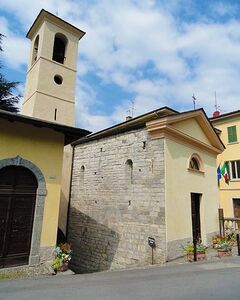
The church of St. George is located in Bellagio, next to City Hall. It is contemporary with the Basilica of St. James, dating back to ' XI - XII century (dated between 1080 and 1120). Originally the apse and altar were facing east; but then moved...
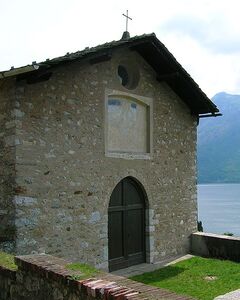
According to tradition, the church was built in the thirteenth century, at the behest of a crusader returning from the Holy Land. According to another legend, the church was built on a refuge belonging to the order of the Templars. Positioned on a...
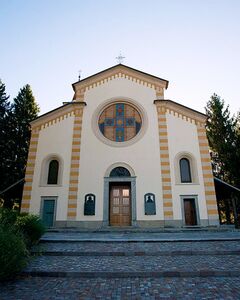
The church stands on a hill that dominates the valley. The current building is the result of a series of operations occurred over the centuries. Rebuilt on top of the pre-existing building, in the 16th century the church was formed of only one...

The construction of the church began in 1791 and ended in 1823 requiring the works of several architects: Clemente Isacchi, Giuseppe Pollack, Giuseppe Bovara and Simone Cantoni. The church hosts a crucifixion of 1879 by Mosè Bianchi and a painting...
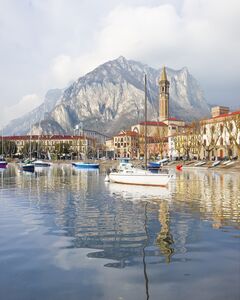
Main church in Lecco dedicated to the saint patorn of sailors. Its structure is in Neoclassical style thanks to the architect Giuseppe Bovara who worked on its enlargement and contains 17th century furniture, a baptismal font of 1596, Romanesque...
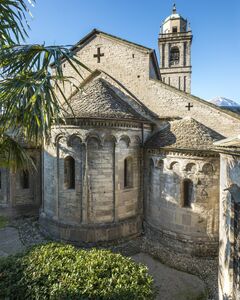
One of the finest examples of Lombard-Romanesque with an intact apse. The parish Church of San Giacomo (St. James) dates back to the 12th century. The rest of the structure has undergone numerous restorations, especially during the 18th century....

Near the top of the Ghisallo pass stands the Sanctuary of the Madonna del Ghisallo. Its name, according to the legend, comes from a certain "Ghisallo" who, in the Middle Ages, near the pass was attacked by bandits. He made a vow to the Madonna to...
In the seventeenth century the inhabitants of this village near Lecco were granted the right to fish in the river Adda. Fishing boats were pulled up on dry land when done with their day’s catch and when combined with the small fisherman homes became...
Not far from the shore, in front of the town Ossuccio, lies Comacina Island, the only Island in lake Como with its little white church dedicated to S. Giovanni. The island is also home to roman ruins, nature hikes and a well known restaurant:...
Faggeto Lario’s name originates from the large number of beech forests in the region. In the village of Palanzo, on the occasion of the Sagra Torchio, an ancient wine press dating from the second half of the sixteenth century carved from a single...
The village extends from the shore of the lake to Monte Preàla. The higher part of the village is called Castello because it was fortified in the Middle Ages. It took part in the feud of Nesso, which was ruled by the Visconti family but was later...
Destination of natural beauty including the Val Senagra Oasis, waterfall and Rogolone, one of the oldest oak trees in Europe. Here you can also visit S. Maria del Tiglio, one of the most important Romanesque buildings of the province....
This little village, which lies on the western shore of Lake Como, at the foot of Monte Costone, is one of the most distinctive places on the lake. In the last century Sala Comacina was already considered an important holiday destination, as is...
Located on the northern shores of Lake Como, this town boasts a large marina and beach set against dramatic mountains in the background. Water sports are popular here as well as hiking and bird-watching in a nearby bird sanctuary....
Located on the western shore of Lake Como, the area consists of the two distinct centres: Urio and Carate Lario; they were administratively united in 1927. Urio, rich with residential villas, is situated on a beautiful panoramic position, on a slope...
Located on the western shores of Lake Como, the town derives its name from the river that flows from the mountains to the lake. A pebble beach invites water activities like swimming, kayaking, windsurfing and sailing....
Cadenabbia is a favorite spring and autumn resort, owing to the great beauty of the scenery, vegetation, and its sheltered location. It also serves as a popular health resort and a holiday place for travelers. The town was founded by the Celts about...